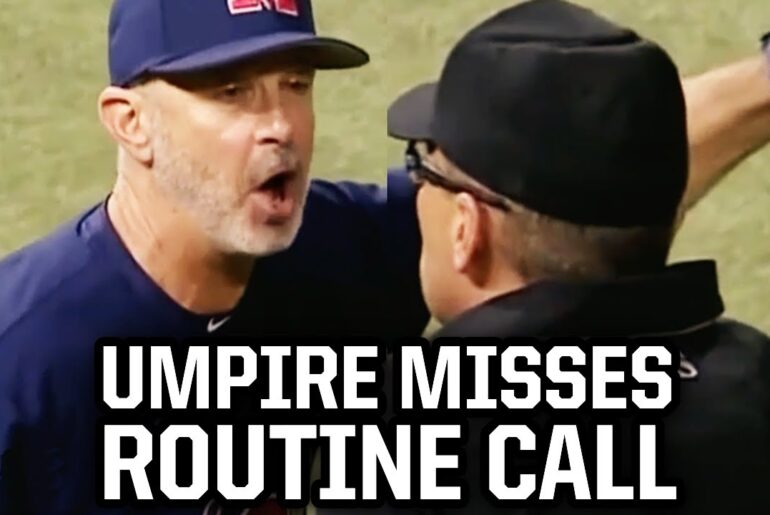In the high-stakes world of postseason baseball, players are constantly looking for ways to gain an edge over their opponents. One player who has been employing a unique strategy this postseason is Giancarlo Stanton of the New York Yankees. Stanton’s playful mind games with opposing pitchers have not only entertained fans but also yielded impressive results on the field. In this article, we delve into Stanton’s intriguing approach and its impact on the game.
The Unorthodox Pitch Sequence
In Game Two against pitcher Shane Bieber, Stanton showcased his ability to disrupt the rhythm of the opposing pitcher. With a 2-0 pitch, Stanton swung and missed. Bieber, feeling confident, decided to throw the same pitch again, which was arguably low and away. However, this time the call went in favor of Stanton, resulting in a strike. Surprised by the call, Stanton couldn’t believe his luck. The count was now full, putting pressure on both the pitcher and batter.
A Blessing in Disguise
Stanton’s reaction to the questionable call was what set him apart. Instead of protesting or stepping out of the batter’s box, he calmly requested time, as if he needed a moment to gather himself. However, he didn’t actually leave the box or adjust his stance. He wanted the pitcher to be aware that he was ready and waiting. This mind game created a psychological advantage for Stanton, as the pitcher had to readjust and reconsider his strategy.
The Head Games Continue
Stanton’s playful tactics didn’t end with Game Two. In Game Five, facing another pitcher, he employed the same strategy of calling for time, but without actually stepping out or adjusting his position. He simply wanted to disrupt the pitcher’s rhythm and create a mental challenge. By doing so, he showcased his confidence and control over the situation.
The Home Run Finale
As the first pitch was delivered by the opposing pitcher, Stanton’s focus remained unwavering. He didn’t flinch or give any indication of being distracted. With each time call, he played with the pitcher’s mind, making him second-guess his approach. Then, when the pitcher finally threw the 2-0 pitch, Stanton seized the opportunity and launched a powerful home run. The crowd erupted, and the scoreboard showed three runs in favor of the Yankees.
The Art of Gamesmanship
Stanton’s mind games highlight the importance of gamesmanship in baseball. While it’s common for batters to call for time to disrupt a pitcher’s rhythm, Stanton took it to another level by not actually stepping out of the batter’s box. His ability to maintain focus, make eye contact, and deliver a home run showcases his skill and psychological prowess.
Conclusion
Giancarlo Stanton’s playful approach to the game of baseball has captivated fans and confounded opposing pitchers. By calling for time without leaving the batter’s box, he disrupts the rhythm of pitchers and gains a psychological advantage. His ability to maintain composure and deliver powerful hits demonstrates his mastery of the mental aspect of the game. As we witness Stanton’s mind games, we can’t help but appreciate the strategic nuances that make baseball such a fascinating sport.



